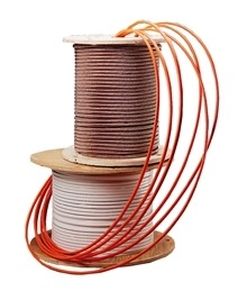Parallel constant watt heating cables ?
Parallel constant watt heating cables, also known as parallel resistance heating cables or constant watt heating cables, are designed to provide a uniform heat dissipation over their entire length, regardless of the ambient temperature. These cables are particularly useful for applications where uniform heating is required. Here you will find a detailed overview:

How Parallel Constant Watt Heating Cables Work
- Structure: Parallel constant watt heating cables consist of several resistance heating elements connected in parallel. Each heating element is usually a resistance wire that generates heat when an electric current flows through it. The heating elements are embedded in an insulating material, and the entire assembly is encased in an outer protective jacket.
- Uniform power output: The parallel arrangement ensures that if one heating element fails, the others continue to work and provide uniform heat output. Each heating element in the cable generates a fixed amount of power per unit length, resulting in uniform heating.
Key Features
- Consistent Heating: Delivers uniform and consistent heat output along the entire length of the cable.
- Reliability: The parallel design ensures continued operation even if one or more heating elements fail.
- Flexible Installation: Can be cut to length in the field and is easy to install in a variety of configurations.
- Durability: Constructed to withstand harsh environmental conditions, including exposure to moisture, chemicals, and UV radiation.
Applications
- Pipe Freeze Protection: Prevents pipes from freezing in cold environments by maintaining a consistent temperature along the pipe’s length.
- Roof and Gutter De-Icing: Keeps roofs and gutters free from ice dams and icicles by providing consistent heat.
- Floor Heating: Provides uniform heat for residential and commercial floor heating systems.
- Process Temperature Maintenance: Used in industrial settings to maintain consistent temperatures in pipelines, tanks, and vessels.
- Snow Melting Systems: Installed in outdoor surfaces like driveways, walkways, and stairs to melt snow and ice.
Advantages
- Uniform Heat Distribution: Ensures even heating, which is crucial for applications requiring consistent temperature maintenance.
- Reliability: The parallel design enhances reliability by allowing the cable to continue operating even if a section is damaged.
- Ease of Installation: Can be cut to the desired length and is easy to install in various configurations.
- High Power Output: Can deliver a significant amount of heat, making them suitable for demanding applications.
Considerations
- Energy Consumption: Provides constant power output, which might result in higher energy consumption compared to self-regulating cables in some applications.
- Temperature Control: May require external temperature control devices (such as thermostats or controllers) to prevent overheating and ensure safe operation.
Conclusion
Parallel constant watt heating cables are a reliable and efficient solution for applications that require uniform and consistent heating. Their parallel design ensures continued operation and uniform heat distribution, making them ideal for a wide range of applications, including pipe freeze protection, roof and gutter de-icing, floor heating, process temperature maintenance, and snow melting systems. Their ease of installation and robust construction further enhance their suitability for both residential and industrial use.
